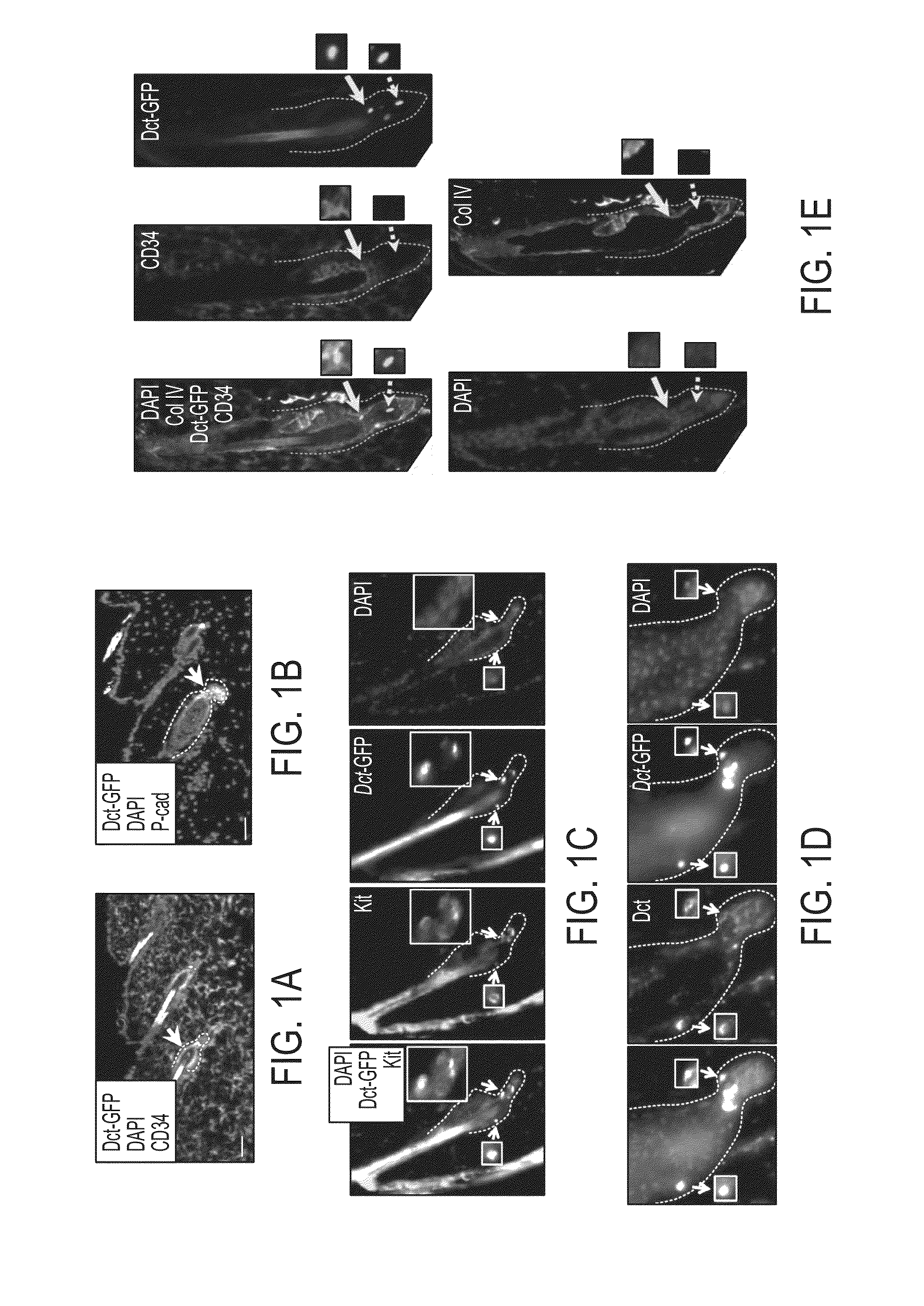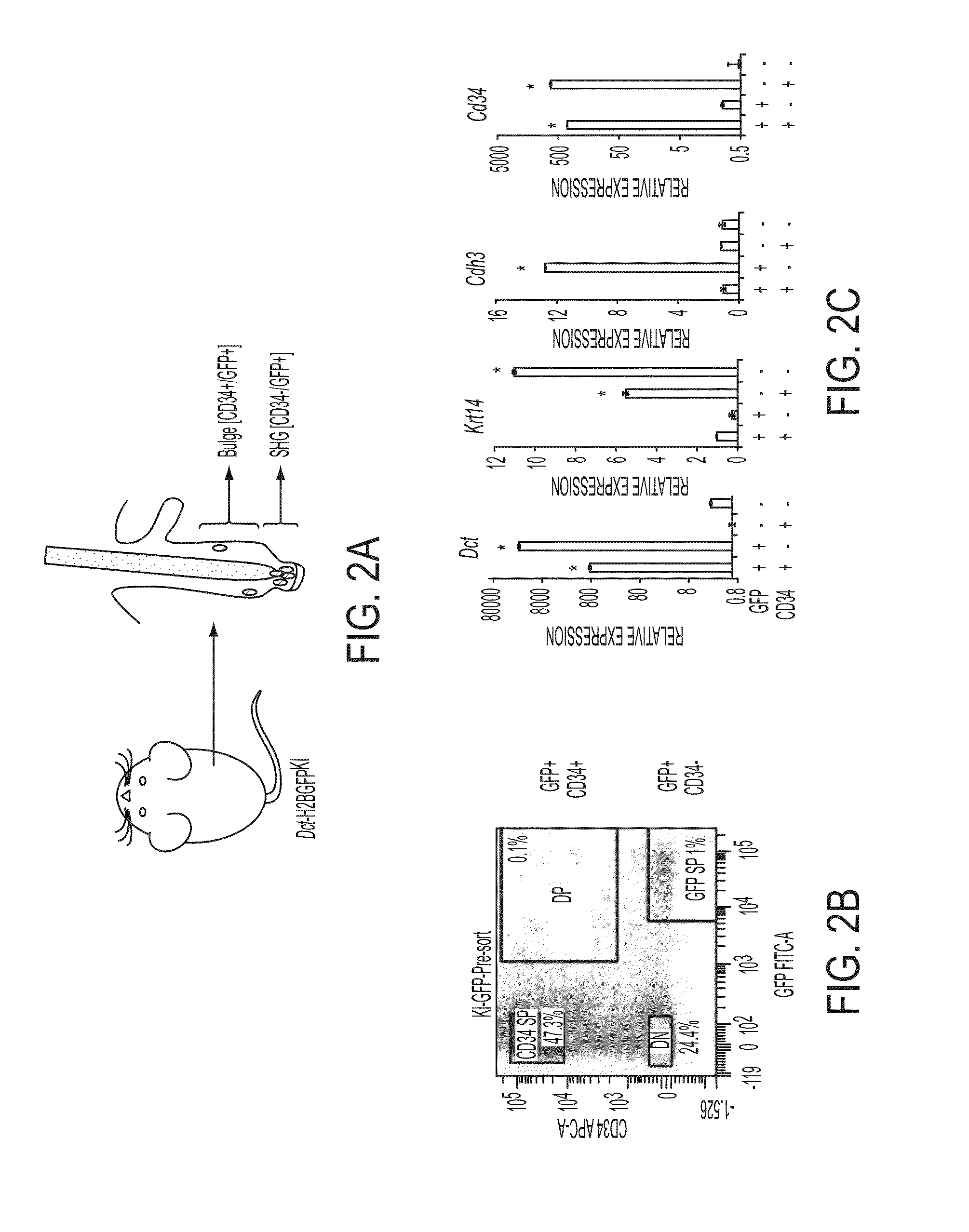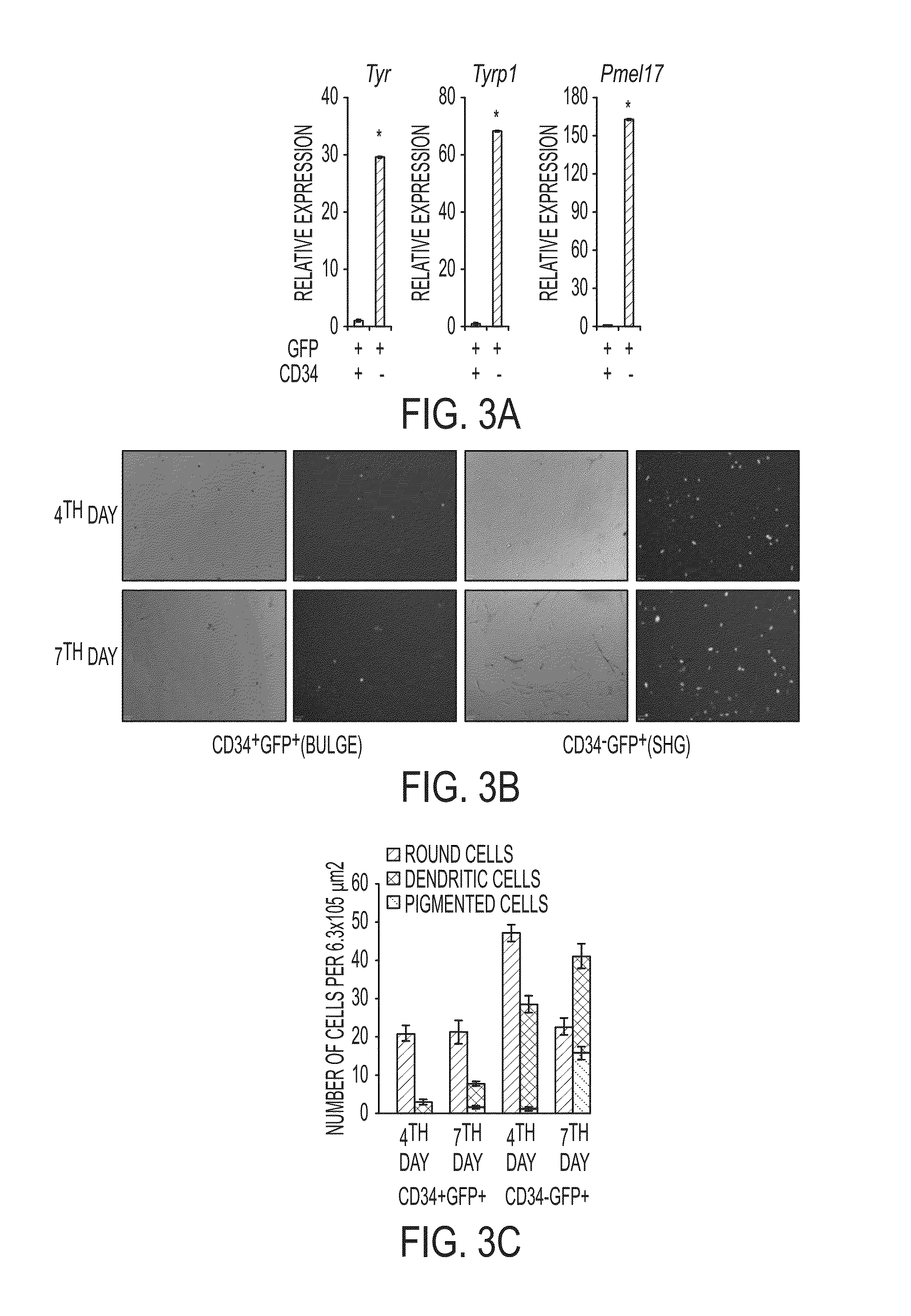Functional myelination of neurons
a technology of functional myelin and neurons, applied in the field of functional myelination of neurons, can solve the problems of neurological problems, particular techniques that can be effective in replacing myelin loss in humans, and reduce the speed of neural transmission or stop it altogether
- Summary
- Abstract
- Description
- Claims
- Application Information
AI Technical Summary
Benefits of technology
Problems solved by technology
Method used
Image
Examples
example 1
Materials and Methods
Generation and Characterization of Dct-H2BGFPKI Bitransgenic Mouse Model.
[0111]A knock-in mouse model expressing the tetracycline-regulated transactivator (tTA) gene under the control of the murine dopachrome tautomerase (Dct) melanocyte specific promoter was used to identify MeSCs. The transgenic mouse was generated to allow a melanocyte specific tTA transactivation in vivo. The transgenic cassette expressing the tTA gene under the control of the Dct promoter was inserted in the Hprt gene. The Hprt gene is localized on the X-chromosome. This transgenic mouse was then crossed with TRE-H2BGFP mice to generate a bitransgenic mouse model. The Dct-tTA knock-in mouse was designed to drive expression of H2BGFP constitutively in bitransgenic Dct-tTA knock-in; TRE-H2BGFP mice in the absence of doxycycline. See FIG. 6A-6E for photographs providing a characterization of the Dct-TtaKIH2b-Gfp bitransgenic mouse model.
[0112]Dorsal skin obtained from t...
example 2
Identification of GFP-Expressing MPCs in Bulge / LPP and SHG of Telogen HF
[0136]To identify melanocyte label-retaining cells with the properties of melanocyte stem cells (MeSCs) in the telogen, or resting stage, murine hair follicle (HF), Dct-H2BGFP mice were developed. Dct-H2BGFP mice are bitransgenic mice with both the Dct-tTA and TRE-H2BGFP transgenes. To overcome problems with the fidelity of expression of randomly inserted Dct-tTA transgenes, instead a version of Dct-tTA mice was generated in which the transgene was inserted into the Hprt gene locus using gene targeting. By manipulating the administration of doxycycline to these mice, quiescent melanocyte label-retaining cells (LRCs) could be generated and visualized in the telogen HF. Similar to cells from the Tet-On iDct-GFP mice, Dct-H2BGFP cells were present in both the CD34-expressing bulge / LPP region of the HF and the CD34-negative, P-cadherin-expressing secondary hair germ (SHG) region at the base of the telogen HF (FIG. 1...
example 3
Isolation and Characterization of CD34(+) Vs. CD34(−)MeSCs in HF at 2nd Telogen
[0137]CD34 expression selectively by bulge / LPP Dct-H2BGFP cells provided a strategy to separate these cells from SHG Dct-H2BGFP cells to evaluate their molecular and functional properties. Single cell suspensions prepared from shaven, dorsal skin of approximately 8-week-old (P56) mice, an age when all HFs are synchronously in the telogen stage, were incubated with anti-CD34 antibody and prepared (FIG. 2A) for fluorescence-activated cell sorting (FACS). Dct-H2BGFP cells could be separated into distinct CD34(+) and CD34(−) populations using FACS.
PUM
| Property | Measurement | Unit |
|---|---|---|
| thickness | aaaaa | aaaaa |
| temperature | aaaaa | aaaaa |
| area | aaaaa | aaaaa |
Abstract
Description
Claims
Application Information
 Login to View More
Login to View More - R&D
- Intellectual Property
- Life Sciences
- Materials
- Tech Scout
- Unparalleled Data Quality
- Higher Quality Content
- 60% Fewer Hallucinations
Browse by: Latest US Patents, China's latest patents, Technical Efficacy Thesaurus, Application Domain, Technology Topic, Popular Technical Reports.
© 2025 PatSnap. All rights reserved.Legal|Privacy policy|Modern Slavery Act Transparency Statement|Sitemap|About US| Contact US: help@patsnap.com



